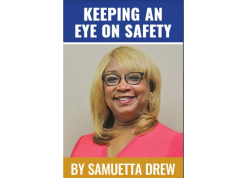 Having the Conversation now could make a difference later
Having the Conversation now could make a difference later
(NAPSI)—A stroke can happen to anyone at any time, regardless of race, sex or age. It is a leading cause of death and serious long-term disability that affects nearly 800,000 people in the U.S. each year. Immediate medical attention may limit the effects of stroke, but most people are unaware of the signs and symptoms and what to do if they think someone is having one.
That’s why the National Stroke Association is working with Genentech to launch “Time To Talk,” a national stroke awareness campaign to encourage people to take action by talking with family and friends about the signs and symptoms of stroke and what to do if a stroke occurs.
Bob Steele of Marietta, Georgia learned the importance of being able to recognize a stroke after suffering one himself five years ago. Fortunately, Bob was able to alert his daughter when he realized he was experiencing symptoms of stroke.
“I was outside mowing my lawn when all of a sudden I felt dizzy and fell to the ground,” Bob recalls. “I was lying there, watching my life flash before my eyes, when my daughter thankfully came outside. I knew to tell her I was experiencing a stroke and to call 9-1-1.”
A stroke occurs when a blood vessel that carries blood and oxygen to the brain is blocked by plaque or a blood clot (acute ischemic stroke) or breaks (hemorrhagic stroke). The visible signs and symptoms of stroke include speech impairment, arm numbness and weakness, severe headache, sudden confusion, trouble seeing out of one or both eyes, as well as uncontrollable drooping of the face.
“According to one estimate, approximately 1.9 million brain cells may die after being deprived of oxygen, which is why it is imperative to seek immediate medical attention,” said Sarah Parker, M.D., stroke neurologist at Illinois Neurological Institute in Peoria, Illinois. “There are treatments available if a patient’s symptoms are recognized quickly and they are transported to an emergency room early enough.”
Bob was rushed to the hospital, and thanks to the immediate medical attention he received, Bob is here today to help spread the word about stroke awareness.
“My stroke taught me that life is precious,” said Bob. “I encourage everyone to have the conversation about stroke with family and friends and learn about the signs and symptoms of stroke and what to do if a stroke occurs.”
“Time To Talk” asks individuals to pay it forward by sharing vital information about stroke and the importance of acting quickly. You never know when you might need to help someone around you or yourself. Have the conversation today!
In the event that you or someone you know begins to show signs and symptoms of a stroke, the F.A.S.T. test can be used as a quick screening tool.
For more information, go to www.stroke.org/TimeToTalk.



